( – promoted by navajo)
Throughout the Northern Plains of Alberta, Saskatchewan, Montana, the Dakotas, and Wyoming there are 135 archaeological features commonly called Medicine Wheels. While the best-known of these features is found in Wyoming, they are most frequently found in Alberta and Montana. Most of these medicine wheels were constructed and used for unknown reasons long before the first Europeans entered the region.
The medicine wheel is a pattern of boulders found atop high hills and river plateaus. Medicine wheels may include cairns (piles of boulders), rings (circles of boulders), and spokes (lines of boulders). These are all arranged in a radial configuration. In some instances the central cairn may contain up to 100 tons of rock.
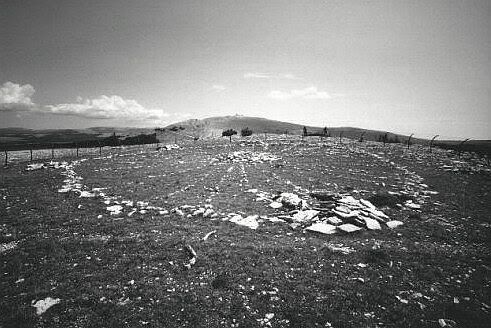
In spite of the fact that medicine wheels are common features associated with ancient American Indian populations, there has been almost no archaeological investigation of these sites. Consequently, there has been a lot of speculation, particularly by people with no understanding of either American Indian cultures or contemporary archaeology, about the meaning of these sites.
Some of the possible interpretations of the medicine wheel features are discussed below:
Burial Monument: In a couple of cases, the central mound of the medicine wheel seems to be a burial site and hence the speculation that medicine wheels are burials, perhaps for high status individuals. However, there is little actual evidence to back up this hypothesis and the fact that North Plains Indian cultures tended to be egalitarian seems to work against this idea.
Commemorative Monument: There are some who feel that the medicine wheels were constructed to commemorate events or individuals, either historic or mythical. In other parts of North America, Indian people did construct stone cairns as commemorative monuments. This is a hypothesis that can’t be ruled out, but there seems to be little oral tradition which supports it.
Ceremonial Structure: Many contemporary Indians have pointed out the similarities between the medicine wheels and the ceremonial structures used in the thirsty dance, renewal dance, and sun dance. Therefore they feel that the medicine wheels are ceremonial structures which may have been linked to these ceremonies.
Shown below is a Sun Dance structure showing how the poles connect to the center.
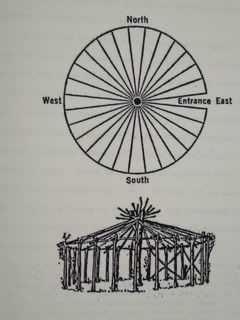
In some cases there are tipi rings-rings of rocks which were once used to hold down tipi covers-in the area of the medicine circles. These may be the camps which people used when visiting the medicine wheel for ceremonial purposes.
Vision Quest Structure: Some of the medicine wheels, including the Bighorn Medicine Wheel in Wyoming, have U-shaped stone features that are associated with the vision quest. In a vision quest, the person seeking the vision would lay within this feature to await the vision. In addition, a number of the Plains tribes have traditions involving the Little People. During the vision question, stones are arranged in lines as living symbols of the Little People. During the quest, these stones are fed offerings. The Little People are often associated with the Sun, the Moon, and the Stars.
According to the Crow, the little people live under the ground and pass between their home and the upper air through a deep pit or cave, formed by a great crack in the limestone to the west of the Medicine Wheel. During the vision quest at this site, the little people come from the cave. The forest service has filled in the clefts and caves and thus destroyed the home of the little people.
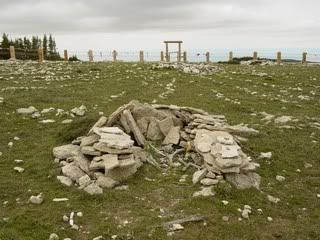
Buffalo Cult Structure: Some people feel that the medicine wheels were used in conjunction with ceremonies to call in the buffalo for the communal buffalo hunts. In some cases, the medicine wheel feature may have an association with a buffalo jump, but in most cases there is no direct connection between the site of the medicine wheel and known hunting sites.
Petroform: Throughout the Northern Plains, there are rock arts sites, such as the one at Writing on Stone in Alberta. Many of the pictographs (art painted on stone) and petroglyphs (art carved in stone) seem to resemble the medicine wheels. Are the medicine wheels simply another manifestation of this symbol?
Astronomical Observatory: About six medicine wheels seem to be purposefully oriented to enable observation of rising and setting of the Sun, Moon, planets and stars for calendric or ceremonial purposes. Marking specific astronomical events, such as the solstice, are important in many Indian cultures. In some of the medicine wheels, the spokes seem to point within two degrees of the summer solstice sunrise. While marking the summer solstice tends to be common among sedentary agricultural tribes, such as the Hopi, hunting and gathering people such as the Plains tribes also needed to be aware of the passage of the seasons.
Some people have pointed out that the Big Horn Medicine Wheel has 28 spokes-the number of days in a lunar month and thus it has a calendric function. However, other people have suggested that this represents the coming together of 28 different tribes.
Traveler’s Signpost: While there are some who feel that the medicine wheels were signposts, or possibly maps, they are often located away from known trails.
Gnomon Projection: Some archaeologists have suggested that a central pole or tipi within the Medicine Wheels acted essentially as a gnomon (a device to cast shadows and direct light from above). This may have been used in marking the seasons, as well as events such as the solstice.
Beneath the central cairn at the Big Horn Medicine Wheel is a conical hole in the bedrock about 1 meter deep, which could have held a vertical pole. The central cairn appears to have been built first and then the spokes added later.
Conclusion:
The medicine wheels are intriguing archaeological features relating not only to the American Indian heritage of North America, but also to its spirituality. For Native Americans these are symbolic structures reflecting ancient spiritual traditions. With regard to understanding the symbolic meaning of the medicine wheels, they have been subject to far more wishful thinking than to a realistic appraisal of their actual purpose(s). I suspect that they were used for many different things, possibly at different time periods and by different groups. In the meantime, it’s fun to speculate.
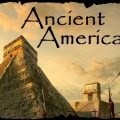
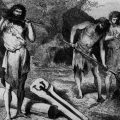
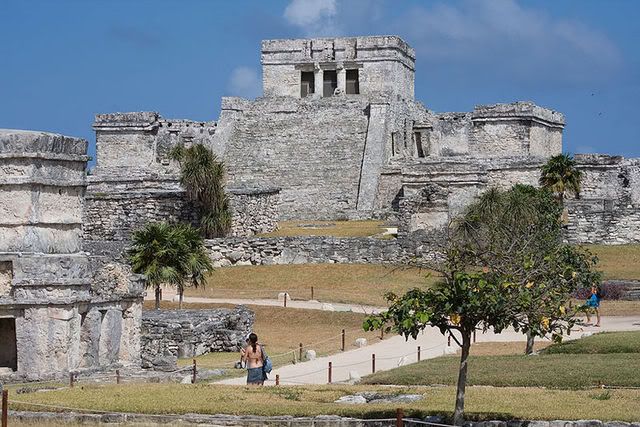
Leave a Reply